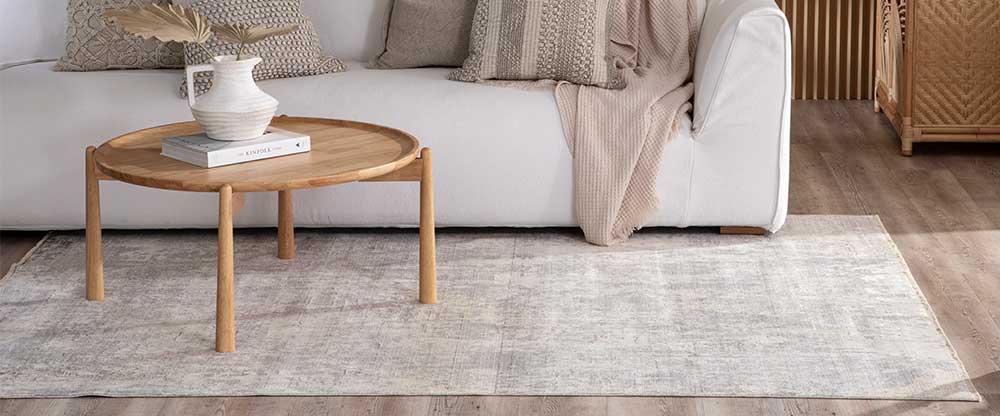There are few pieces in a home that have the decorative prowess to tie a room together as effects as a rug. Whether it’s the foundation for the distance or a of entirety, a rug can deliver an incomparable layer of interest and intrigue. But finding the appropriate rug has its truthful proportion of limitations, no longer to mention challenges. Between the scale, cloth, fashion, and make, there are a number of of factors to keep in mind—and having a seemingly limitless scope of options doesn’t make the method any easier.
For instance: Purchase one which’s too small, and you run the chance of immediately diminishing all of the effort you positioned into designing said room in the first area. Run too massive, and the rug can envelop the gap and weigh down its existing furniture. Finding that sweet spot in the center is key. To help you get commenced, we pooled together an intensive manual to reply all your burning questions on shopping for the nice piece, based totally in your style and wishes.
What to Consider Before Buying a Rug
First and predominant, it’s all about identifying the room the rug will stay in and the cause it’s supposed to serve. Is it a announcement piece to unify the cultured, or a useful one that prevents slips in excessive-traffic zones? If you have got pets and little ones, a sensitive antique find is possibly no longer recommended. Next, you’ll want to reflect onconsideration on the rug’s length and form; style and substances; pile; care and cleaning; and rug pad. More on all of those below.
1. Size and Shape
When it involves choosing a rug for a particular room, finding one which suits it, length-clever, is essential. “It’s sort of just like the Goldilocks rule here,” says Ben Hyman, co-founder and CEO of Revival Rugs. “You need a rug that fits, whether or not small or large. Something that isn’t too big—i.E., there may be enough floor seen between the wall and the rug—but additionally something that isn’t too small, which includes a postage stamp under your espresso desk.” As a standard rule of thumb, find a rug which could incorporate the important elements of a room or function a buffer between constructed-ins.
- Living room: If your couch is against a wall, make certain that at least its the front legs and the the front legs of the neighboring armchairs are at the rug. In a large living room with a floating seating region, the rug should incorporate all furnishings, front and back legs, with area round.
- Dining room: Use the table’s length as your factor of reference. The rug must amplify as a minimum 24 inches on all facets, whether circular or round, so even a pushed-again chair can nonetheless in shape inside its range.
- Bedroom: For a spacious room, opt for a massive rug that suits beneath the whole bed and night time tables, with more width on either aspect. For smaller rooms, the rug have to cover more or less ⅓ of the bed’s base; instead, strive small region rugs on both facet of the bed.
- Kitchen, entryway: Stick with a narrow runner or smaller piece (think 2’ x 3’ or 4’ x 6’) for these regions.
- Outdoors: Bigger is higher right here, and also you’ll need a rug that is 12-24 inches shorter than the space’s perimeter.
How to Measure a Room for a Rug
Take the overall measurements of a room and reduce the scale by means of 1-2 toes to arrive at the appropriate-sized rug for the distance. Alternatively, use painter’s tape to outline the rug dimensions in its best location, then degree the fringe, and use that as your jumping-off point.
2. Materials and Style
There is a seemingly limitless listing of descriptors that encompass the cultured type of a rug. But extra frequently than no longer, the material it’s made from is what informs the style of a bit. Rug professional Lisa Wagner, of RugChick.Com, says those are the maximum common material classes:
Natural fibers: Wool, cotton, silk, jute, sisal
Pros: Durable and long-lasting; wool rugs, specifically, are extremely good at hiding soil.
Cons: Often pricier and require expert cleansing; dyed silk rugs can run if uncovered to water spills.
Synthetic fibers: Acrylic, polyester, polypropylene
Pros: Affordable, smooth to smooth, normally stain-resistant.
Cons: Can end up infected with mould and micro organism from repeated spills or pet injuries; may additionally want replacing sooner than wool or herbal fiber rugs.
Artificial silk: Viscose, bamboo silk, banana silk
Pros: Very lower priced; busy patterns can cover dirt.
Cons: Viscose is like an absorbent sponge—it no longer handiest attracts moisture and oil however even a simple water spill can break fibers.
Identifying the proper cloth for your area relies upon significantly on your way of life and the room wherein the rug will stay. Your aesthetic of preference can also be a aspect, however recall, you’re never restrained to one style or any other, and mixing and matching is always a superb manner to locate what’s unique to you. Here’s a brief breakdown:
- Traditional: Persian, Oriental, Moroccan, Berber (may be vintage and antique pieces)
- Contemporary: Mid-Century, Geometric, Coastal, Country, Farmhouse
- Natural: Jute, Sisal, Silk, Sheepskin, Leather, Cowhide
- Bohemian: Shag, Kilim, Dhurrie, Southwest, Ikat
3. Pile
The “pile” of a rug is a point of reference for the density, or thickness, of a bit. “Rugs which can be coarser will continually have extra pile to them than satisfactory and intricately designed pieces,” says vintage rug expert Omri Schwartz of Nazmiyal Rugs. Rug pile usually falls into two categories:
- Low-pile rugs: These rugs have shorter fibers and loops (assume flatweaves), making them high-quality for high-site visitors regions along with the kitchen.
- High-pile rugs: These rugs have taller, looser fibers (assume shag or Moroccan rugs), making them more plush and perfect for the bed room or dwelling room.
“The peak of a rug’s pile is in reality more of a cultured and overall performance consideration,” says Haynes Robinson, SVP of product improvement at abc carpet & domestic. Regardless of the pile peak, a rug will continually provide sound buffering, however the thicker the rug, the higher the insulation. “Added pile also increases the existence and overall performance of the carpet through the years.”
4. Care and Cleaning
It’s inevitable that, at some point, you’ll find your self with a dirty rug, so that you’ll want to vacuum. They might also appear dirtier due to the fact that they absorb dirt and oil, although most (which include acrylics) could be stain-resistant.
Wool: Natural oils (lanolin) preserve spills from penetrating the fibers, notes Revival Rugs’ Hyman. “For hand-knotted rugs, you could blot the stain to absorb any excess, then use a toothbrush with dish cleaning soap and water to tease it out. Resist the urge to scrub, which can damage the fibers.”
Cotton and silk: Enlist the help of a expert to save you making stains worse via trapping them deeper inside the fibers
5. Getting a Rug Pad
Once you’ve secured your dream piece, it’s all about ensuring that the rug can face up to the test of time. That way getting a rug pad. Not simplest do they protect you from slipping on a bunched crease, but in addition they prevent dents by cushioning heavy fixtures and damage to the floor. For high visitors regions, consisting of the bathroom or kitchen, opt for a rug pad that includes a strong grip, at the same time as in the bed room or dwelling room, a cushioned rug pad (pictured above) will contribute a further layer of plush consolation.

